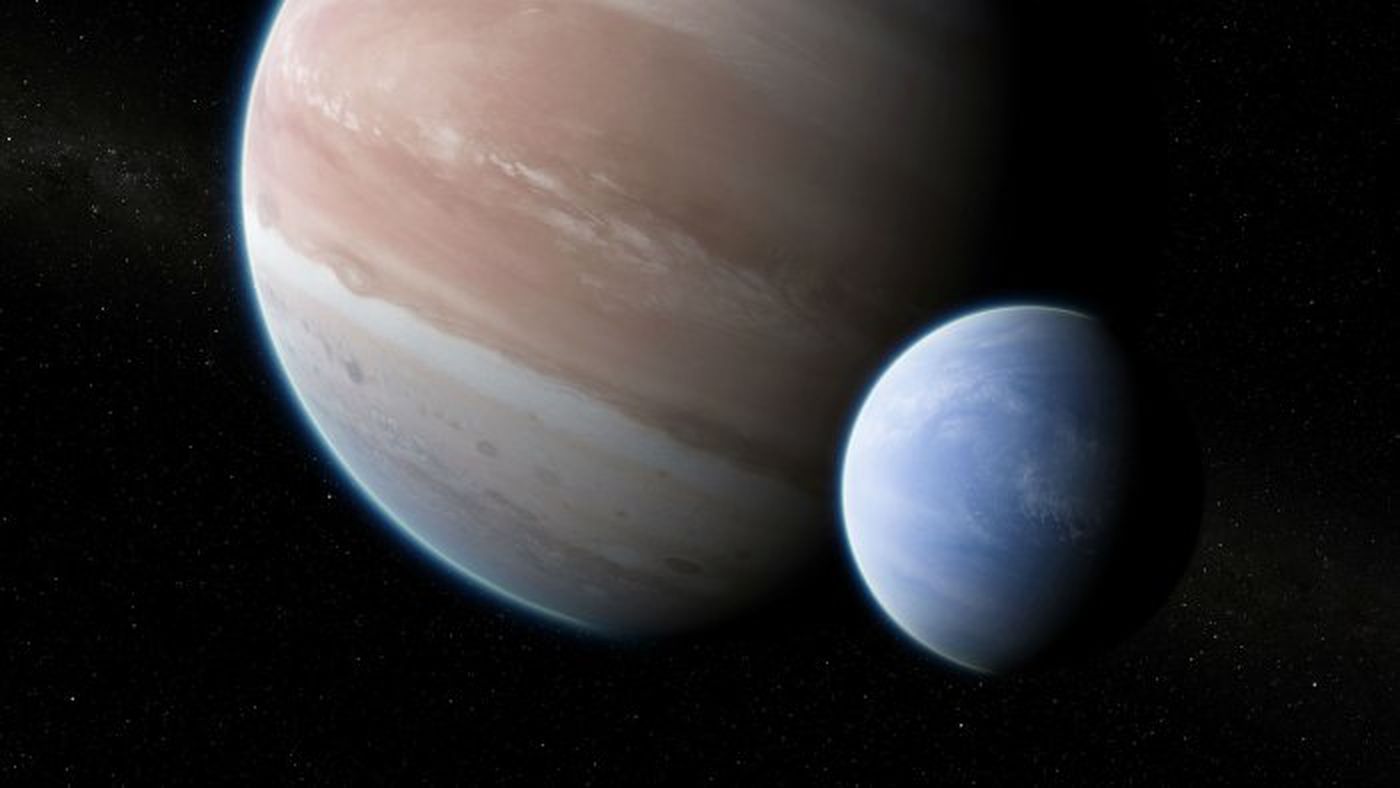The universe has a date with the Moon: a second extrasolar Moon discovered 5,500 light years away
Our Moon is it a rare or even isolated case in the universe? To get to the bottom of it, astronomers have been hunting extrasolar moons (or exomoons). This research yielded fruitful results in 2017, when a team of scientists from Columbia University led by David Kipping claimed to have unearthed the very first extrasolar Moon (Kepler-1625b i), located 8000 light years from our Earth and orbiting the giant planet Kepler-1625b. This discovery has only been partially confirmed scientifically (thanks to data from Hubble).
Artist’s impression of the exomoon Kepler-1625b i orbiting the giant planet Kepler-1625b
Rebelote therefore, with once again the team of David Kipping at the maneuver. Astronomers claim to have discovered a second extrasolar moon by peeling this time the data from Kepler. The new exomoon (Kepler 1708b i) would orbit around the planet Kepler 1708b located 5500 light years from Earth.
This second gaseous exomoon would be much smaller than Kepler-1625b i (whose diameter would be equivalent to that of Neptune!). Does the universe have a date with the Moon? Perhaps James Webb will allow this time to definitively confirm the existence of these distant cousins of our beautiful Moon…



